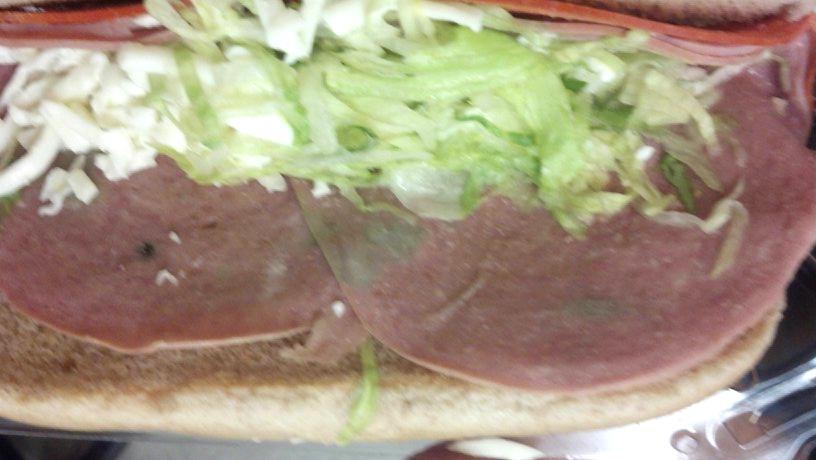Sandwich meat with green spots? Rice in Chinese food that appears to be spoiled? What’s going on here? Is the food being served on campus safe for students to eat? In recent weeks, students have reportedly been served less than appetizing dishes on campus and have taken their concerns (along with pictures of the food in question) to the school administration.
As seen in the shocking pictures along with this article, it seems only natural that it is finally time for the school to step in and attempt to resolve the issue. Rest assured, the problem has been made aware to Principal Amanda Corridan and Assistant Principal Victor Schiro.
Schiro was quick to take action once confronted with the food safety questions. “I was disappointed to see those kinds of things, yet glad the students spoke up,” he says. He stated that he was so disappointed with what he saw in those pictures that he “went straight to the venders to let them know what we’ve seen,” immediately after being shown. “Some of the school’s food is prepared offsite, like the ‘Pick Up Stix’ chicken and rice,” Schiro notes; because of this, some of the issues with the food will be dealt with on an individual basis with the vendors. Schiro also stated it is “sometimes difficult to resolve these issues within the health standards that are in place while still giving students food that they will enjoy.”
Due to these recent concerns, to assure that next year’s food is not only within the health standards, but also enjoyable to students, a “food show” to sample potential school food for next year will be held on March 6th. Many students will be selected by Schiro at random to participate in the food show to ensure a fair selection process of next year’s food.
Schiro plans “more scrutiny with vendors, letting them know what we’ve seen,” and to “pick food students will like within the rules in place. This is something I’ve pushed for.”
Schiro is also interested in what students think of the “food stands” that are separate from the cafeteria. “They were put there to give students an option to choose something different than what the cafeteria gives them,” he says, but he wonders if students like them enough that they should remain at the school. Because of the health requirement for school cafeteria food, Schiro assures, “one change that will be occurring for sure is the sodium levels in the food.”
It’s incredibly important to have a voice in what happens at your school, so if you find something wrong with the food you were served in the cafeteria, take pictures, bring it to the attention of the higher ups on campus, and know that you can make a difference. Schiro stated he was “glad the students [who provided the original pictures] spoke up,”, and that “this is an awakening for the students to become more involved.”




